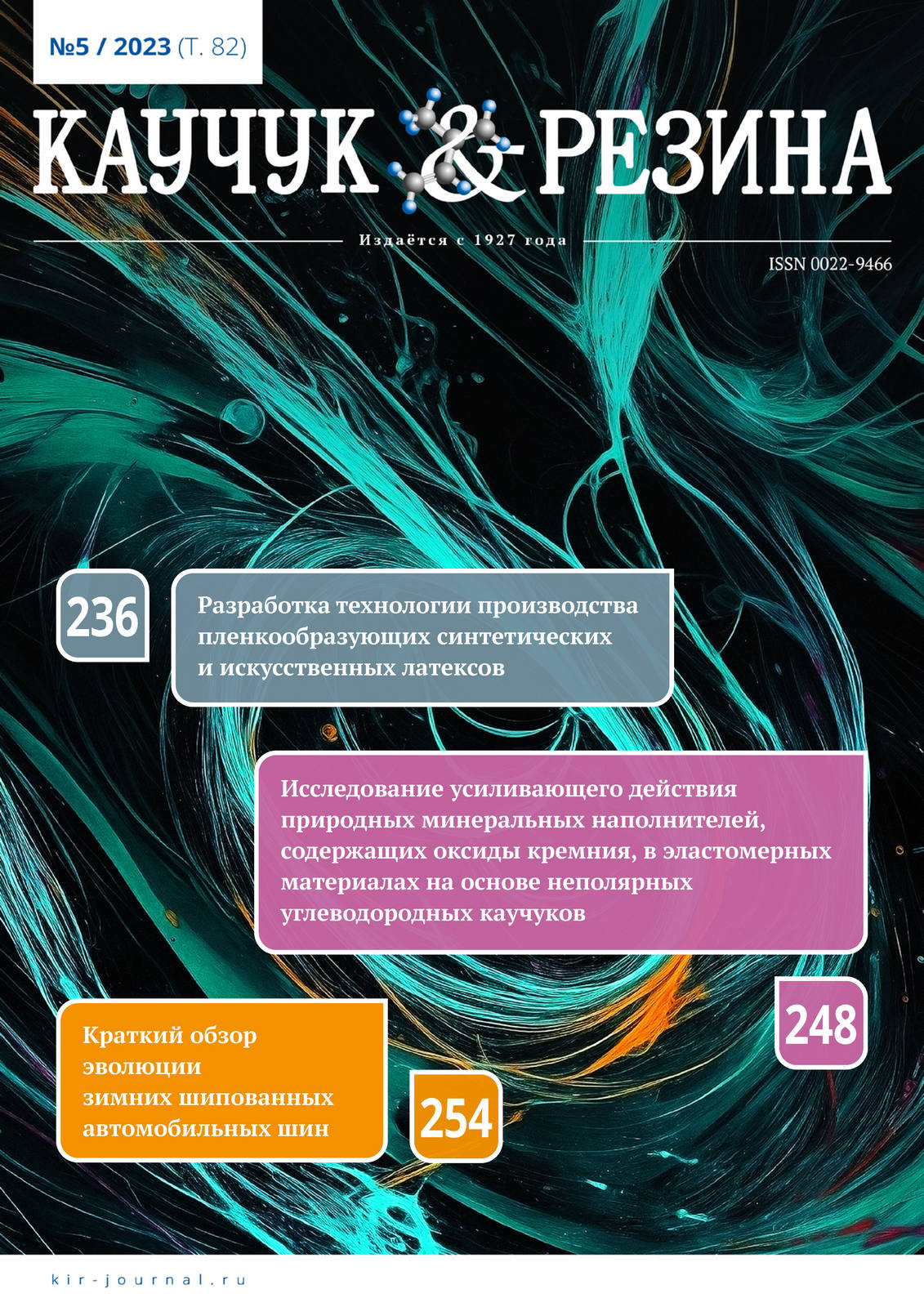Frost Resistance Research of Rubbers Based on a Mixture of Chloroprene, Butadiene and Styrene Butadiene Rubbers
Published 2023-11-04
How to Cite
Abstract
One of the basic principles necessary for the creation of modern frost-resistant rubbers for use in the Artic zones is a combination of rubbers of different nature. Since chloroprene rubbers are well combined with polar and non-polar rubbers, it was of interest to study the properties of elastomeric compositions based on chloroprene rubber (CR) of the Denka S-40 brand, polybutadiene rubber (BR) of the B-Ti brand and solution-polymerized styrene-butadiene rubber rubber (SSBR) of the brand 1810F. It is shown that the addition of a mixture of BR and SSBR rubbers to the CR leads to an increase in the minimum torque. The greatest values of the time of the beginning and end of sub-vulcanization were found for CR-based rubber that does not contain other rubbers. Mixtures containing 80,0 pts. wt. CR, 16,0 pts. wt. BR, 4,0 pts. wt. SSBR and 80,0 pts. wt.CR, 13,3 pts. wt. BR, 6,7 pts. wt. SSBR are subjected to the fastest sub-vulcanization. These same mixtures reach the maximum of vulcanization the fastest and the largest values of the rate of formation of a spatial grid during vulcanization are revealed. It has been established that the combination of chloroprene rubber with butadiene and styrene butadiene rubbers makes it possible to obtain a material with a satisfactory complex of physical-mechanical and low-temperature properties.

